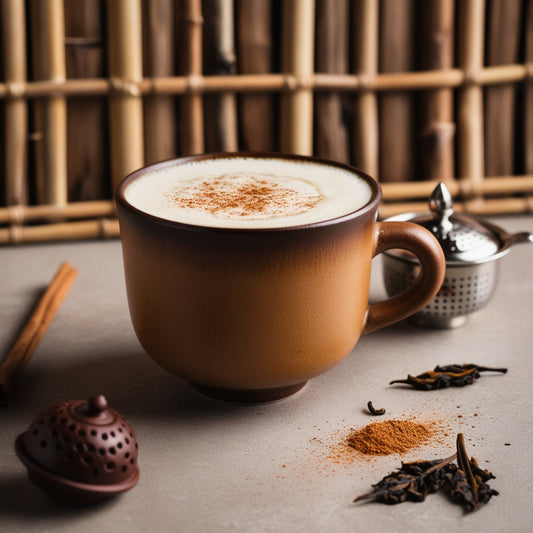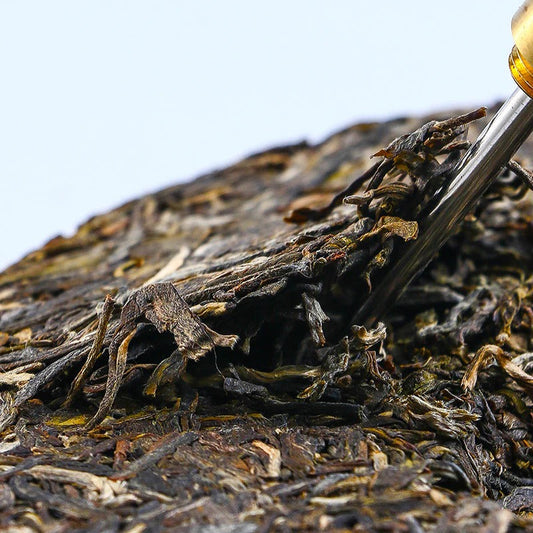Overview
Looking to explore a whole new world of tea? Imagine diving into a cup filled with history, flavor, and a touch of mystery.
People face many problems in brewing and because of that they do not get the exact essence and tools for brewing this brilliant tea. In this guide we will explore the Brewing history and brewing process.
Further, we will guide you how how Pu-erh has emerged from traditional methods to western methods.
Table Of Content
- Introduction
- Classification of Pu-erh
- Problems in brewing Pu-erh tea
- Traditional Brewing Method
- Modern Brewing Method
- Importance of tools and from where to buy in London
- Conclusion
Introduction
Pu-erh tea isn't your ordinary brew. It's like the aged wine of the tea world, packed with rich taste and a story that goes back centuries. Plus, it's not just about sipping; it's about embarking on a journey through time and culture.
And guess what? You don't need to be a tea expert or have fancy tools to enjoy it. There are two main ways to brew it: the traditional Chinese way, which is like stepping into ancient rituals, and the modern way, perfect for beginners wanting to explore without any fuss.
So, whether you're a history buff curious about ancient traditions or just someone eager to try something new and delicious, Pu-erh tea has got you covered.
Classification Of Pu-erh
Discover the complexity of Pu-erh tea through its classification system. Learn about the distinctions between "sheng" as well as "shou" Pu-erh varieties, each offering unique flavors and aging processes. Dig into the world of Pu-erh tea classification to gain insight into this ancient and revered beverage.
Pu-erh tea comes in two main types:
-
Sheng: Sheng Pu-erh, also known as "raw" Pu-erh, is like the energetic youth of the Pu-erh family. It undergoes minimal processing and is aged naturally over time. At first, it can taste fresh and a bit like green tea, but as it ages, its flavors evolve, becoming more complex and mellow, much like how a person matures over time.
- Shou: On the other hand, shou Pu-erh, referred to as "ripe" Pu-erh, represents the mature side of Pu-erh tea. It goes through a special fermentation process, which gives it a smooth, earthy flavor profile with hints of mushrooms and damp earth. Shou Pu-erh typically has a dark reddish-brown color, distinguishing it from sheng Pu-erh. While some shou Pu-erh can be enjoyed immediately after production, it continues to age and improve over time, albeit at a slower rate compared to sheng Pu-erh.
Both types of Pu-erh tea have their own unique qualities and are loved by tea enthusiasts around the world.
Moreover, further we classify Pu-erh using the four digits. The first two digits stats the year in which the Pu-erh is produced. The third digit indicates the grade of the Pu-erh leaves and the last one refers to the factory which produced.

Problems In Brewing Pu-erh Tea
Brewing Pu-erh tea correctly is crucial to enjoy its rich, complex flavors. Some problems in brewing Pu-er tea are:
- Incorrect water temperature
- steeping time
- leaf-to-water ratio
- brewing vessel can lead to a subpar cup.
The water should be between 195°F and 205°F (90°C and 96°C), and the steeping time should start at 2-3 minutes, gradually increasing for subsequent infusions. Use 1 teaspoon (3-5 grams) of leaves per 6-8 ounces (180-240 ml) of water, and brew in a gaiwan or clay teapot with fresh, filtered water.
If not brewed properly, you'll miss the earthy, woody, and smoky notes, the smooth mouthfeel, and the nuances that develop with aging. Additionally, you may not experience the potential health benefits, such as aiding digestion and promoting weight loss. Follow these guidelines to ensure a perfect Pu-erh tea brewing experience.
Traditional Brewing Method
This method is for those who are curious about Chinese tea culture, this brewing method is specially for the tea enthusiasts as it give the better understanding on the Chinese tea practices. For best experience we suggest you to use yixing tea set.
Ingredients and Tools:
- 3-4 grams of Pu-erh tea
- Yixing brewing vessel with a tea filter
- Serving pitcher
- Tea cups
Brewing Steps:
- Preparation: Begin by warming up your tea set. Pour hot water into the tea pitcher, yixing pot, and tea cups. Swirl the water around and then pour it out.
- Tea Leaves: Place the Pu-erh tea leaves into the yixing teapot. Add a small amount of hot water to cover the leaves. Swirl gently for a few seconds, then pour out the water. Don't toss the wet leaves just yet.
- Rinse (Optional): If you're brewing ripe Pu-erh tea, repeat the rinsing process once more. For raw Pu-erh tea, you can skip this step.
- Brewing: Fill the yixing teapot with hot water at 195 degrees Fahrenheit.
- Cover and Wait: Put the lid on the yixing pot and pour a bit of hot water on top of it. Let it sit for about 10 to 20 seconds until the lid becomes dry.
- Pour and Enjoy: Once the lid is dry, carefully pour the tea into the tea cups. Now, it's time to savor your creation!
Remember, you can brew Pu-erh tea multiple times using this method. For each subsequent infusion, add a bit more time to the steeping process – around 5 to 10 seconds should do the trick.
So, whether you're unwinding after a long day of studies or exploring a new hobby, brewing Pu-erh tea is a delightful journey that's both educational and delicious.

Modern Brewing Method
This is the simplest and modern way to brew Puerh.
Ingredients and Tools:
- 3-4 grams Pu-erh tea
- Mug or cup
- Tea infuser or just the loose tea leaves
How to Brew:
1. Measure Leaves: Take about 3-4 grams (a small spoonful) of Pu-erh tea leaves. If you have an infuser, put the leaves inside it. If not, just put them directly in your mug.
2. Heat Water: Boil water in a kettle. Let it cool for a minute or two after boiling. Pu-erh tea shouldn't be made with boiling water. Carefully pour the hot water over the tea leaves in your mug, filling it about three-quarters full.
3. Steep: Allow the tea to steep (soak) for 2-3 minutes. Use a timer or watch the clock. After steeping, remove the infuser or strain out the leaves using a spoon or by pouring the tea into another cup.
4. Taste and Adjust: Take a small sip of the tea. If it's too strong or bitter, add a bit of hot water to dilute it. You can drink the Pu-erh tea plain or add a little sugar or honey if you prefer it sweeter.
Brewing tea is all about experimenting and finding what you like best. Don't worry if your first cup isn't perfect – it's all part of the fun of learning about tea!
Remember, both methods result in a delicious cup of Pu-erh tea.
Moreover, Along with the brewing processes the Pu-erh has alot of health benefits that increase the immunity of a person. Sipping this tea will enhance your tastebuds.
Importance of tools
Brewing Pu-erh tea requires specific tools to enhance its unique flavor. Traditional methods use Yixing clay teapots, gaiwans, tea trays, tea knives, and fair cups. These tools help control water temperature and steeping time, ensuring a rich taste. Yixing clay teapots improve flavor over time, while gaiwans offer flexibility. Tea trays manage spills, and tea knives break Pu-erh cakes without damaging leaves.
Modern methods use electric kettles with temperature control, glass teapots, and stainless steel infusers. Electric kettles provide precise water temperatures, essential for Pu-erh tea. Glass teapots add a visual element, and stainless steel infusers are convenient.
Conclusion
In conclusion, Pu-erh tea is like a time machine for your taste buds! It's different from other teas and has two main types. We can brew it in two ways: the traditional Chinese way, which is fancy and has ancient rituals, or the easier Western way.
If you're into Chinese culture, you might enjoy using a special yixing tea set. But if you're new to all this, the Western way is simpler. Either way, you'll get to taste amazing flavors and maybe even feel healthier!
So, if you're looking for a new adventure or just want to relax, give Pu-erh tea a try.
Dive into a new culture you can benefit and try our collection of Pu-erh Tea.
Q&A Section
1. What is so special about Puerh tea ?
A1. Pu-erh tea is like a journey in a cup. It is packed with history and flavor offering a unique experience unlike any other tea.
2. What is the difference between Sheng and Shou tea ?
A2. Sheng is fresh and evolves over time, while shou Pu-erh is smooth and earthy due to a special fermentation process.
3. Why should you try the traditional brewing method of Pu-erh ?
A3. The traditional method offers a deep dive into Chinese tea culture, enhancing your understanding and appreciation of Pu-erh.
4. What are the health benefits of Pu-erh ?
A4. Pu-erh tea boosts immunity and enhances your taste experience, making it a delightful addition to your daily routine. Try it out and see for yourself.






